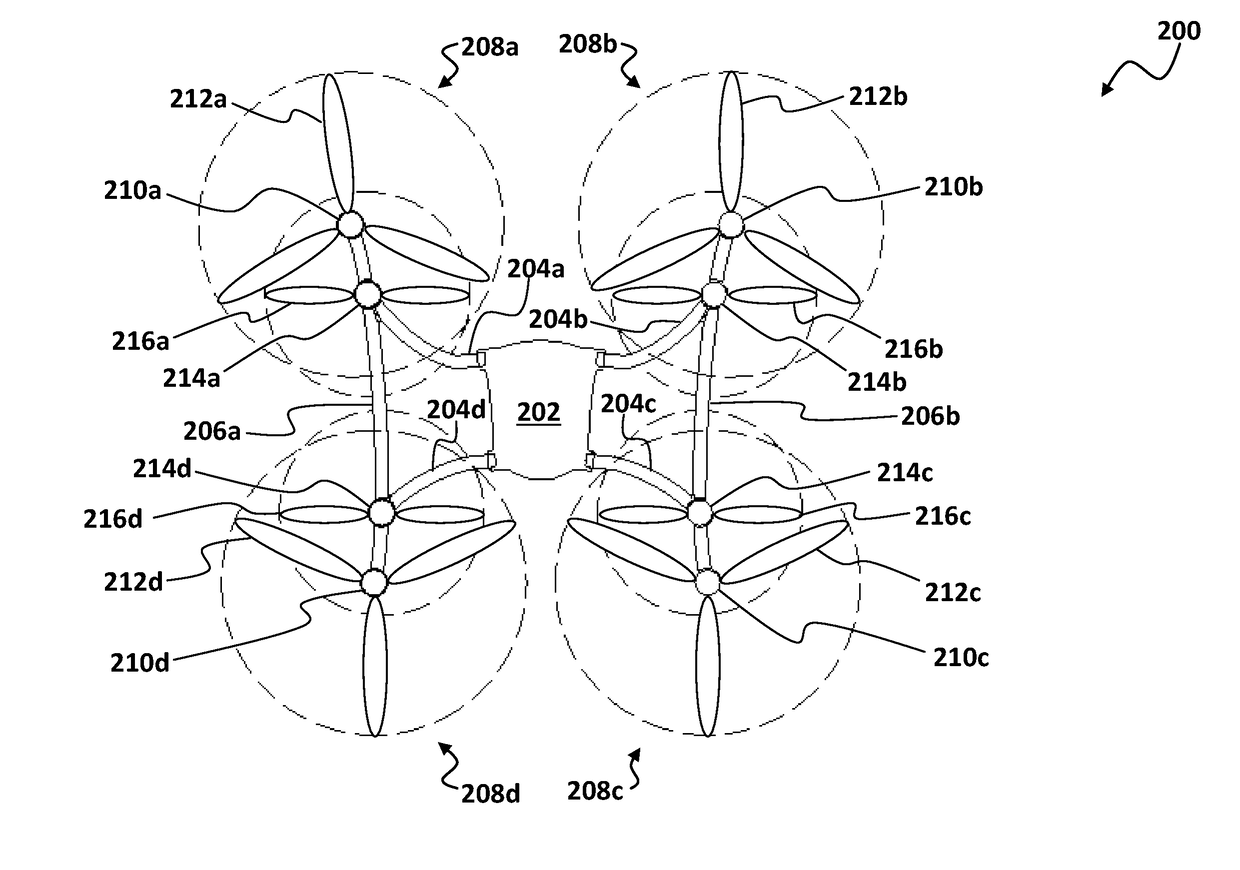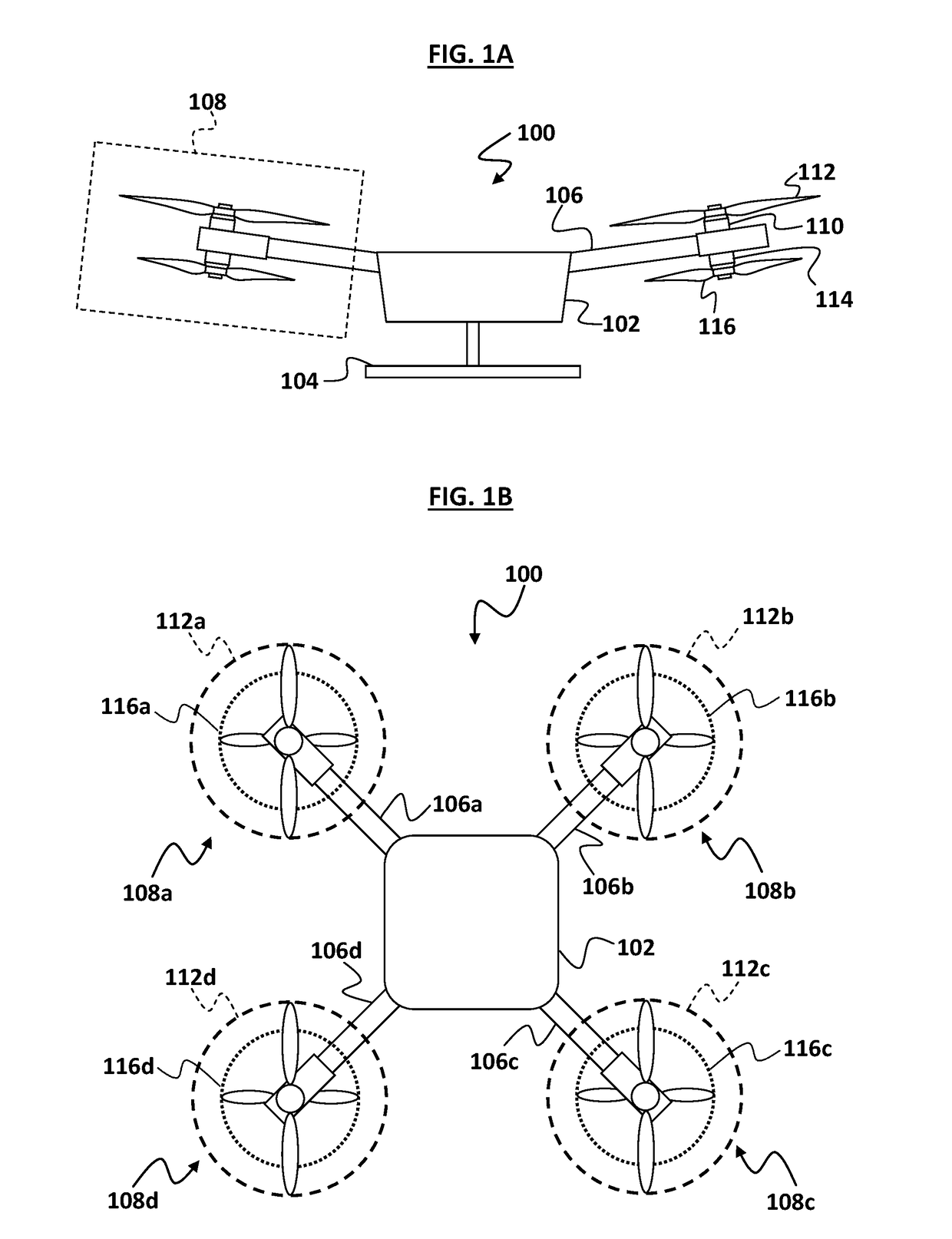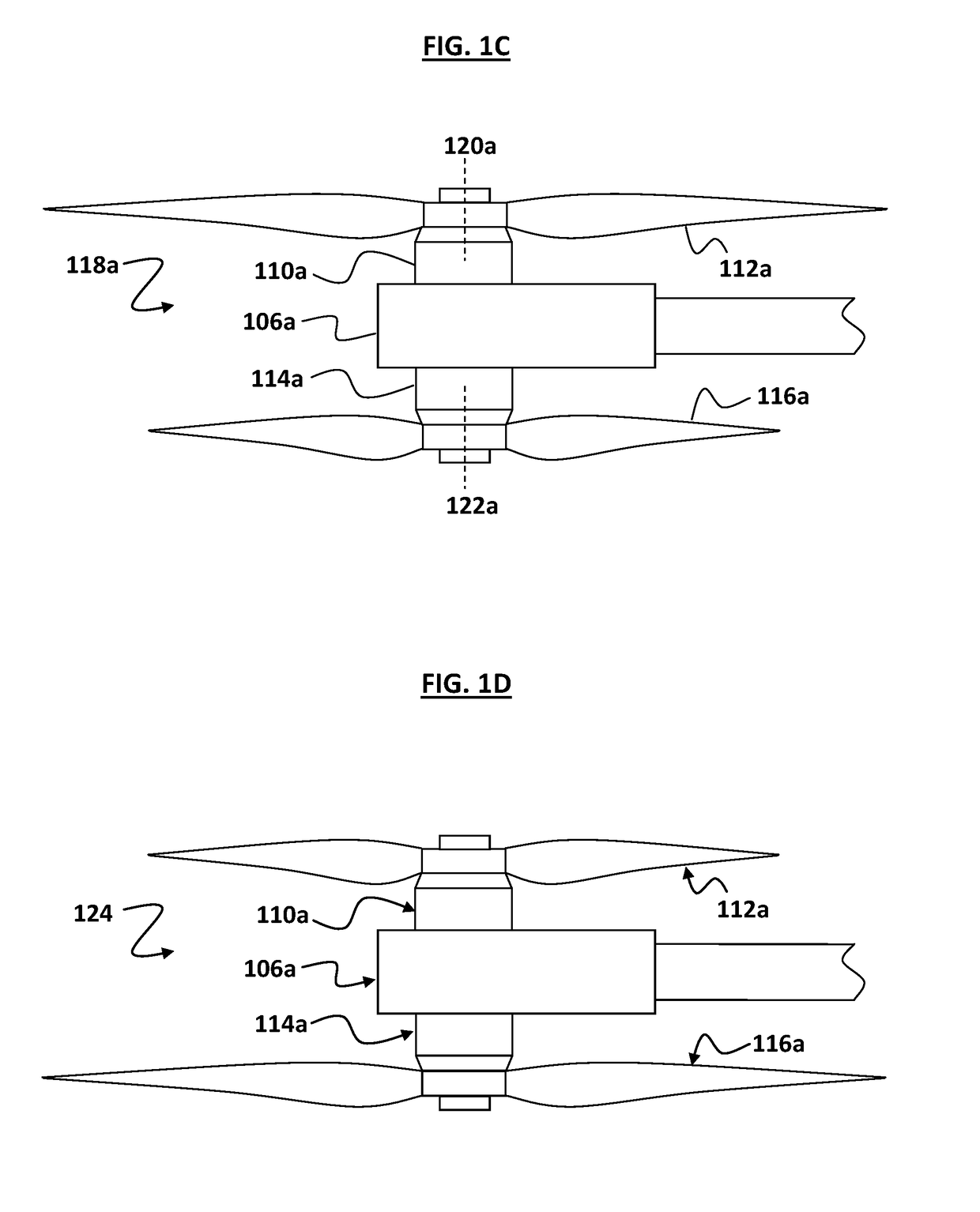Systems and methods for stabilisation of aerial vehicles
a technology for stabilising systems and aerial vehicles, applied in the field of aerial vehicles, can solve the problems of unstable aircraft, difficult speed up and slow down, etc., and achieve the effects of reducing the rotational mass, and reducing the number of aircraft to be lifted
- Summary
- Abstract
- Description
- Claims
- Application Information
AI Technical Summary
Benefits of technology
Problems solved by technology
Method used
Image
Examples
Embodiment Construction
[0056]FIG. 1A and FIG. 1B illustrate an unmanned multirotor aircraft 100 in an “X8” configuration, herein referred to as “UAV 100”. As seen in FIG. 1A, the airframe of the UAV 100 includes a hull 102 supported by a landing base 104. Arms 106 (labelled arms 106a-d in FIG. 1B) extend from the hull 102, with rotor assemblies 108 (labelled rotor assemblies 108a-d in FIG. 1B) secured to the distal ends of the arms 106. It should be appreciated that while the arms 106 are illustrated as being pitched up from the hull 102, this is not intended to be limiting to all embodiments.
[0057]Each rotor assembly 108 includes a top motor 110 (labelled top motors 110a-d in FIG. 1B), to which a top propeller 112 (labelled top propellers 112a-d in FIG. 1B) is secured. Each rotor assembly 108 includes a bottom motor 114 (labelled bottom motors 114a-d in FIG. 1B), to which a bottom propeller 116 (labelled bottom propellers 116a-d in FIG. 1B) is secured. Referring to FIG. 1B, it may be seen that in this ex...
PUM
 Login to View More
Login to View More Abstract
Description
Claims
Application Information
 Login to View More
Login to View More - R&D
- Intellectual Property
- Life Sciences
- Materials
- Tech Scout
- Unparalleled Data Quality
- Higher Quality Content
- 60% Fewer Hallucinations
Browse by: Latest US Patents, China's latest patents, Technical Efficacy Thesaurus, Application Domain, Technology Topic, Popular Technical Reports.
© 2025 PatSnap. All rights reserved.Legal|Privacy policy|Modern Slavery Act Transparency Statement|Sitemap|About US| Contact US: help@patsnap.com



